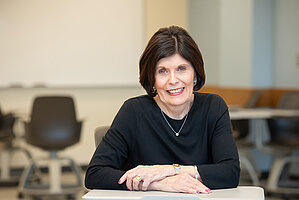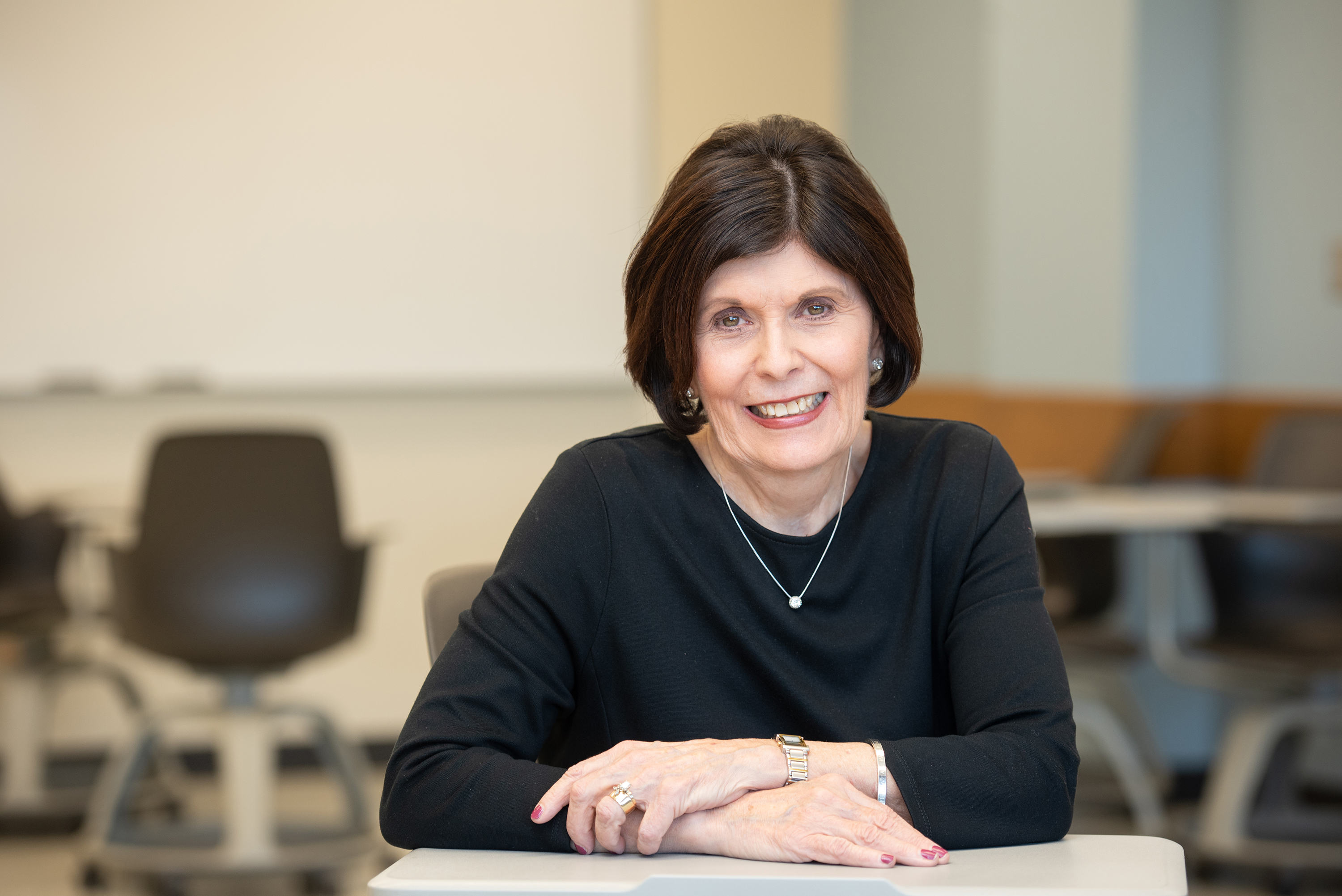
Back to School at NDSU

For most, this is an exciting and often times sentimental time of year. At NDSU, we’ve wrapped up summer orientation for incoming freshman and transfer students as well as their families, and I’ve given my Welcome Week speech. In a few brief minutes I try to transmit some sage advice about success in college, encourage students to enjoy their college experience, and instill confidence that they’ve made the right decision. Every year in my speech, I tell a story and conclude my remarks with the comment, “I hope you find your Jane.”
Shortly after arriving on campus while I was pursing my undergraduate degree at NDSU, I met my very first Bison friend, Jane. We lived in the same dorm and pledged the same sorority; she was even with me when I met my husband-to-be and was in our wedding.
We have been life-long friends ever since. We later found out that our moms met at NDSU parent orientation and hit it off immediately—I can see why!
Meeting Jane also led to getting to know Delrae, John and Wayne and eventually Hugh, Kyle, Mark and Wanda. Which led to Andrew, Megan, Michael, Caleb, Evan, Laura, Garrett, Lauren and Matthew. Lest we forget Lexy and Naomi. I always tell incoming students that even though NDSU prepared me well for my graduate studies and an extremely rewarding career, it is the relationships that I have with my Bison family that I treasure most.
People are wired for connection. I hope you found your Jane during your time at NDSU, and that our new students find theirs too.
Teacher Leader Academy
Brittany Breiland, a middle school English teacher, wanted to pursue a graduate degree but hadn’t settled on a perfect program.
Then the program came to her.
She and 20 of her colleagues at Northern Cass near Hunter, North Dakota, joined the Teacher Leadership Academy through North Dakota State University.
The academy is an innovative program where NDSU and school districts collaborate to bring graduate-level coursework to teachers in their home district. University instructors work with a district liaison to tailor assignments and activities that will further the district’s initiatives and goals.
At the end of the five-semester program, teachers earn a master’s degree in educational leadership and school districts have a group of teachers who have explored and implemented innovative ideas together.
“Everything we read and researched was applicable to our local setting,” Breiland says. “And all of my classmates were my colleagues. It was an incredibly impactful experience.”
NDSU modeled the program after one at Kansas State University. The model encourages educators to connect and share ideas on how to be better leaders for the benefit of students, says Dr. Ann Trousdale Clapper, associate professor in the School of Education and one of the program coordinators.
“It’s about how you can help others in both your district and the state,” Clapper says.
NDSU piloted the program with West Fargo Public Schools in 2014. Since then, the academy has been brought to 14 school districts – some of them smaller, rural districts that combined for the courses.
“We can’t keep up with the demand,” Clapper says.
Shortly after the program started, it gained the attention of the Burgum Foundation, which has partially funded the academy for 10 rural school districts in the state.
“It’s all about giving rural students the same access to high quality education as their peers in larger school districts,” says Katie Itterman, executive director of the foundation. “We believe this model will change education for the better in North Dakota.”
In districts where the teaching leadership academies are held, one can sense a change, Itterman says.
“It creates an attitude of excellence among teachers,” she says. “It’s such a collaborative experience and it creates a support system for educators.”
Michael Stecher teaches life science at Liberty Middle School in West Fargo. He completed the academy in December 2018. His classmates were teachers from throughout the large district.
“It was a better way to get to know people in my district and to push me out of my comfort zone,” he says. “I interacted with colleagues I wouldn’t otherwise meet.”
He also researched how to give students more opportunities to move at their own pace in his classroom. He’ll be implementing the personalized learning style in his classes this fall. The research will make him a more effective teacher, he says, and it contributes to the district’s emphasis on STEM (science, technology, engineering and mathematics) learning.
For Breiland, the academy challenged her to think about how she contributes to her school’s climate and culture.
“It made me more aware of my role as a teammate,” she says. “Every conversation we had led to ‘how does this impact what we do here (at Northern Cass)?”
Those discussions are exactly why the academy has value and the potential to transform education across the state.
“You can lecture a lot on research, but you have to put research to practice,” Clapper says.






